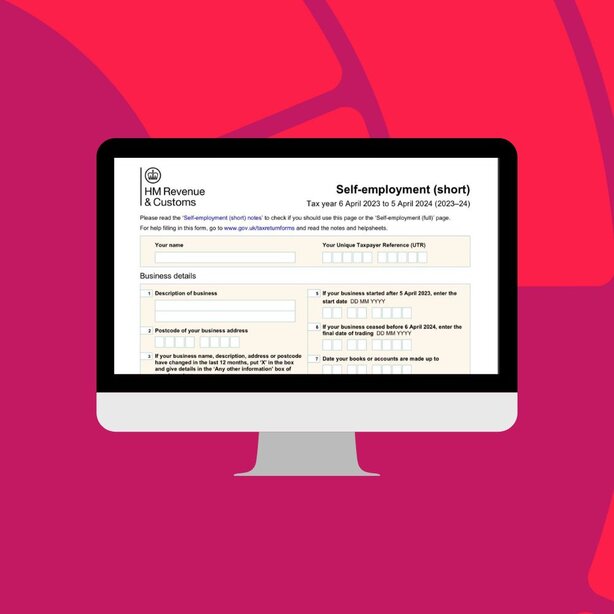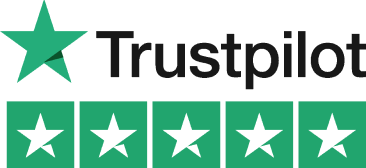An In-Depth Look at the SA103 Form

Navigating UK tax forms can be a daunting task, especially for self-employed individuals required to submit the SA103 form. This essential document forms part of your Self Assessment tax return, detailing your business income and expenses. With a clear understanding of the SA103, you can ensure accurate submissions and avoid potential pitfalls come tax time.
The SA103 form is crucial as it breaks down different types of income and expenses specific to self-employment. It allows HM Revenue and Customs (HMRC) to assess your taxable income accurately. Whether you are a freelancer, contractor, or small business owner, the SA103 ensures your financial dealings are transparently reported.
Completing the SA103 correctly can feel overwhelming, particularly with the array of allowable expenses and deductions. However, armed with proper knowledge and tools like the Pie Tax App, you can effortlessly manage your tax obligations. This guide aims to simplify the process and provide key insights into completing the SA103 form accurately.
Components of the SA103 Form
The SA103 form is a crucial document for self-employed individuals, as it includes detailed sections for recording business income and expenses. Accurately completing each section is vital to ensure that all financial information is correctly reported to HMRC. Precise entries help in calculating the right amount of tax owed and prevent potential issues. Errors or discrepancies in the form can lead to audits, which are time-consuming and stressful. Therefore, it is essential to carefully review and fill out each part of the SA103 form to maintain compliance and avoid attracting unnecessary scrutiny from HMRC.


Key Sections to Note
The SA103 form includes several critical sections that significantly impact your taxable income, such as turnover, allowable expenses, and capital allowances. The turnover section captures your total business income, serving as the foundation for your tax calculations. Allowable expenses cover costs essential to running your business, like office supplies and travel, which can be deducted from your income to reduce your tax liability. Capital allowances account for substantial purchases like equipment and machinery, offering tax relief over time. Each section demands meticulous attention and detail to ensure accurate reporting, ultimately affecting the amount of tax you owe to HMRC.

Accurate reporting on the SA103 form is paramount. A mistake can trigger an HMRC audit, causing unnecessary stress and potential penalties. Nearly 15% of self-employed individuals reported errors in their tax returns, leading to complications.Importance of Accurate Reporting

Understanding allowable expenses is vital for reducing your taxable income. According to HMRC, self-employed individuals deducted a total of £98 billion in allowable expenses in the previous tax year, showcasing the importance of proper categorisation.Allowable Expenses Breakdown

Completing the SA103 Form
Filling out the SA103 form may seem tricky, but with precise steps, you can navigate it smoothly. The form requires a detailed breakdown of your net profit, gross income, and specific allowable expenses. Start by gathering all financial statements, receipts, and documentation of business transactions over the tax year. Proper documentation will ease the process and ensure all entries are accurate.
Next, categorize your expenses into allowable and disallowable expenses. Allowable expenses typically include costs such as office supplies, professional fees, and travel expenses related to your business activities. Being thorough in this step can significantly reduce your taxable income. Double-check all your figures, ensuring they are consistent and verifiable. Using the Pie Tax App can simplify this process through intuitive interfaces and expert tax assistants available on the Pie app.
Submitting Your SA103 Form
Once your SA103 form is accurately completed, the submission process becomes straightforward. You can submit it as part of your online HMRC Self Assessment return. Ensure all sections are correctly filled, and double-check for any errors or omissions. After submission, keep a copy of the form and all related documents for future reference.
If you encounter any complications while filling out the form, the Pie Tax App offers extensive assistance. Their expert tax assistants can guide you through confusing sections and provide tips to maximise your tax deductions. This comprehensive support ensures that you submit an accurate and timely Self Assessment tax return. With the Pie Tax App, you gain access to professional advice, reducing the risk of errors and potential HMRC audits. Their assistance helps you confidently navigate the complexities of tax filing, making the process smoother and more efficient.

Tax Filing Tips

Prepare your documents well before the deadline. Efficient preparation can significantly reduce last-minute stress and errors.The Importance of Early Preparation

Use digital tools like the Pie Tax App. Automation can streamline your tax filing, ensuring accuracy and saving time.Streamline Tax Filing with Digital Tools

Regularly update your financial records. Keeping your records up-to-date simplifies the tax filing process and helps in better financial planning.Maintain Up-to-Date Financial Records

Fun Fact about Tax Forms
Did you know? The SA103 form is among the most common HMRC submissions, reflecting the growing trend of self-employment in the UK. As of 2022, there were over 4.3 million self-employed workers, signifying a robust shift towards freelance and contractual work, making tax filing a crucial skill for many.
Handling Your Tax Responsibilities

Managing tax obligations can be a significant burden for self-employed individuals. However, breaking down the process into manageable tasks and seeking expert advice can make it more approachable. Start by organizing your financial records, which is fundamental to deciphering your business's financial health. Reliable records make it easier to complete tax forms accurately and efficiently.
For those who feel overwhelmed, using tools like the Pie Tax App can be a game-changer. The app provides an intuitive interface for tracking income and expenses, along with providing access to expert tax assistants who can offer specialised advice tailored to your business circumstances.

Maintaining organized financial records is crucial for completing the SA103 form flawlessly. Create a system with categorised folders for receipts, invoices, and statements. Regular updates to this system simplify year-end tax preparation, making the process less daunting and ensuring accuracy in your tax return.Stay Organised

When in doubt, seek professional advice. The Pie Tax App provides expert tax assistants who can address your queries and offer personalised support. Their guidance helps ensure you maximize deductions and minimise errors on your SA103 form, leading to a more accurate and efficient tax filing process.Seek Expert Help
Summary
In summary, being well-versed with the SA103 form is indispensable for self-employed individuals. This guide has outlined the importance of accurate completion, how to detail each section, and emphasized the necessity of precise record-keeping. Ensuring accuracy can prevent costly mistakes and potentially reduce your taxable income through proper deduction of allowable expenses.
Utilizing tools like the Pie Tax App can significantly alleviate the stress associated with self-assessment, offering expert guidance and streamlined processes. These resources help to ensure that you remain on the right side of HMRC, while also optimising your tax responsibilities.
In conclusion, efficiently managing your tax obligations is a blend of thorough preparation, leveraging digital tools, and seeking professional advice. Remember, accurate tax filing is not just a legal requirement but a critical aspect of successful self-employment. Let the Pie Tax App and its team of expert tax assistants help you navigate this complex terrain with ease.
Frequently Asked Questions
What is the SA103 form?
The SA103 form is a section of the Self Assessment tax return specifically for self-employed individuals. It details business income, expenditures, and profits.
Why is the SA103 form important?
The SA103 form ensures that HMRC can accurately assess your taxable income. Proper completion helps avoid audits and penalties while enabling you to claim allowable expenses.
How do I know which expenses are allowable?
Allowable expenses generally include necessary costs you incur running your business, such as office supplies, travel expenses, and professional fees. The Pie Tax App can help identify these expenses.
Can I complete the SA103 form myself?
Yes, you can, though it requires careful documentation and accuracy. Using tools like the Pie Tax App and seeking expert assistance can greatly simplify the process.
What happens if I make an error on my SA103 form?
Errors can lead to HMRC audits, financial penalties, and additional stress. Using the Pie Tax App and consulting expert tax assistants can help ensure accuracy and avoid errors.



